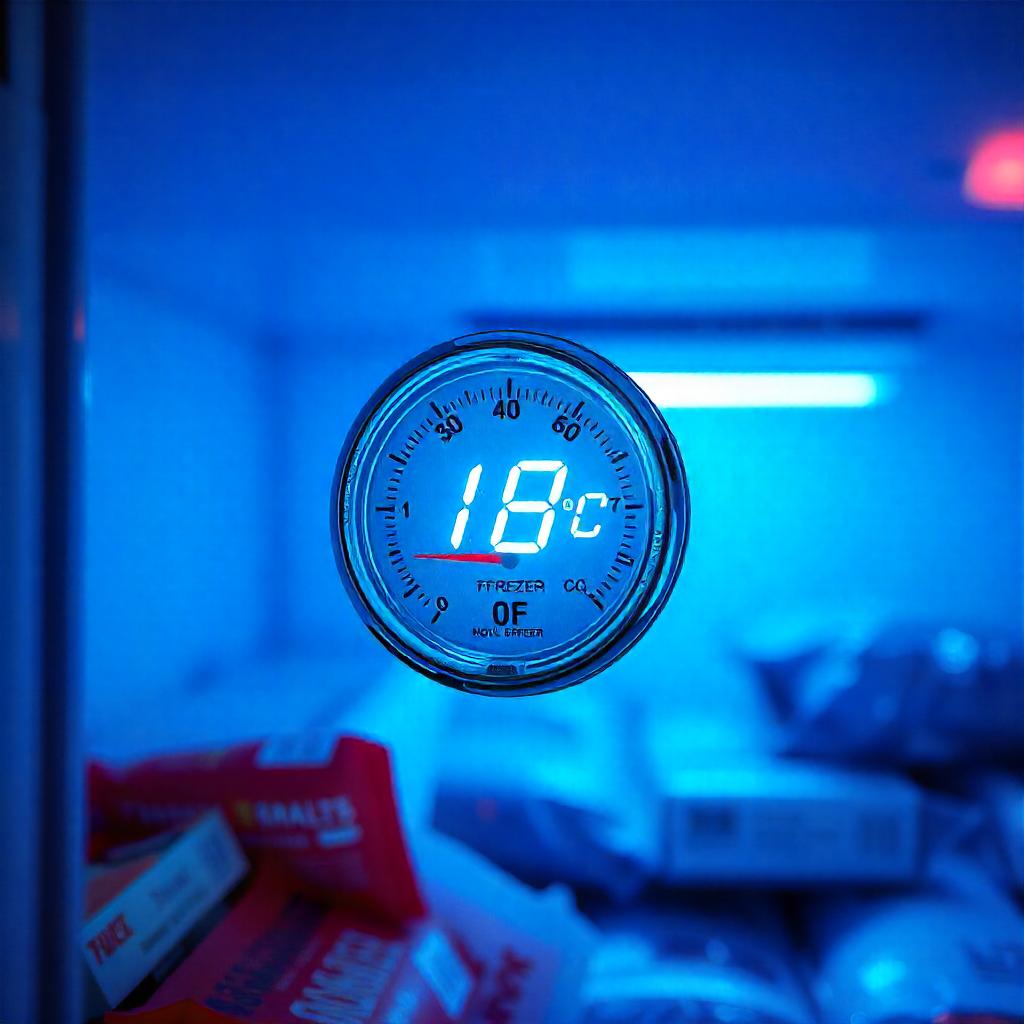
Have you ever wondered what temperature your freezer should be set to for optimal food preservation? Does the exact temperature really matter? The answer is yes — the temperature of your freezer is crucial for keeping food frozen, safe to eat, and fresh. In this blog post, we’ll explore the ideal freezer temperature, the importance of maintaining it, and tips to ensure your freezer operates at its best.
Freezer Temperature: What Should It Be?
The ideal freezer temperature is -18° Celsius (0° Fahrenheit) or lower. This temperature keeps food safely frozen and preserves its freshness. When food is stored at -18°C or lower, the growth of bacteria is halted, which helps maintain food quality over time. By keeping your freezer at this optimal temperature, your food stays fresher for longer and retains its nutrients and flavor.
The Importance of Freezer Temperature
A freezer temperature higher than -18°C can allow bacteria to grow. While freezing food does not kill bacteria, it does inactivate harmful microbes such as mold and yeast, preventing their growth and spread. Keeping your freezer at the correct temperature helps ensure that your food remains safe and that its nutrients, structure, and flavors are preserved.
Proper freezing also prevents freezer burn, which can degrade the taste and texture of food. Freezer burn occurs when food is exposed to dry air in the freezer, causing dehydration and oxidation.
Can Your Freezer Be Too Cold?
Although less common, it is possible for a freezer to be too cold. A freezer that’s excessively cold can lead to freezer burn, especially if the food is not properly packaged or stored. Some foods may even become brittle if stored at very low temperatures. For most household freezers, a temperature range of -18°C to -20°C is optimal. This range ensures food stays frozen and fresh while minimizing the risks associated with excessively low temperatures.
When Should You Adjust Your Freezer Temperature?
Many modern freezer models, such as those from trusted manufacturers like Hoover, come with features that allow you to check and control the temperature remotely, directly from your smartphone. This allows you to monitor your freezer’s performance and adjust the temperature if needed, ensuring that your food stays fresh despite any environmental temperature fluctuations.
In older models, temperature adjustments are typically done manually by using the control dial inside the freezer. Depending on what you are freezing, you may need to set a colder temperature during warmer months, and a higher temperature during cooler months when ambient temperatures are lower.
How to Avoid Freezer Burn
Freezer burn occurs when food is exposed to cold, dry air in the freezer, causing dehydration and oxidation. While not harmful to health, freezer burn can affect the flavor, texture, and nutritional value of food. Here are a few tips to avoid freezer burn:
-
Store food in airtight containers or freezer-safe bags: Proper storage helps preserve moisture in food. Try to remove as much air as possible from bags or containers to minimize exposure to dry air. For long-term storage, vacuum sealers are excellent at removing air and keeping food fresh.
-
Keep your freezer at a consistent temperature: Temperature fluctuations can lead to ice crystals forming on food as the ice melts, then refreezes, which can lead to freezer burn. Make sure your freezer temperature is consistent and stable.
-
Don’t overpack your freezer: It’s important to strike a balance when packing your freezer. A full freezer works best, but avoid overstuffing it. Ensure there’s enough space for air to circulate freely. If your freezer is not full, consider adding bags of ice to maintain the temperature and prevent fluctuations.
-
Consider a No Frost Freezer: No Frost technology ensures an even distribution of temperature and humidity within the freezer, preventing ice build-up and maintaining a consistent environment for food storage. This helps keep food fresher for longer and eliminates the need for defrosting.
Conclusion
Maintaining the proper temperature in your freezer is key to preserving the quality and safety of your food. The ideal temperature range for most household freezers is between -18°C and -20°C. Keeping your freezer at the right temperature helps reduce the risk of freezer burn and extends the shelf life of your food. Regularly checking your freezer’s temperature and investing in advanced models with smart features can make it easier to ensure your food stays fresh, safe, and delicious.
